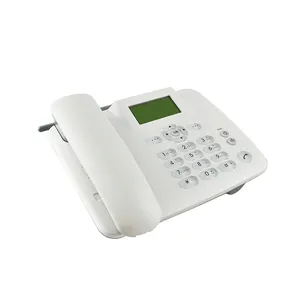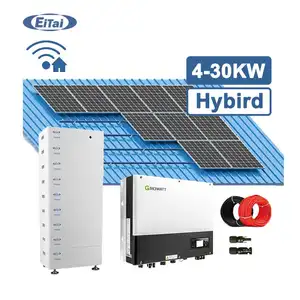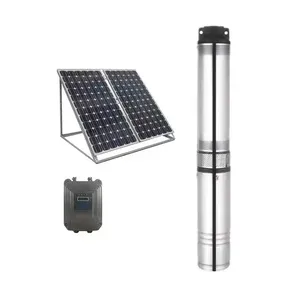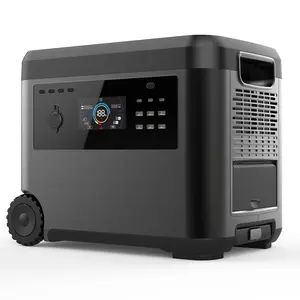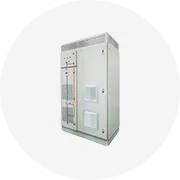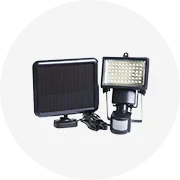Phổ biến trong ngành của bạn






LiFePO4 304ah Prismatic Lớp Một Cổ Phiếu EU lipofe4 lifepo 4 300ah 310ah 302ah 320 AH AH 3.2V 280ah 320ah LiFePO4 tế bào pin
10,00 US$ - 125,50 US$
Đơn hàng tối thiểu: 4 Cái







IMR 280ah LiFePO4 pin di động Lớp Một Đêm Trước lf280k 3.2V EU chúng tôi Chứng Khoán Lithium lăng trụ Li ion LFP EV
Sẵn sàng vận chuyển
58,60 US$ - 61,80 US$
Đơn hàng tối thiểu: 4 Cái
Vận chuyển mỗi chiếc: 33,00 US$







Chúng tôi/PL/ru kho kho 3.2V 200AH 100Ah 280ah 300ah 150AH 400ah 120Ah Pin Lithium Ion pin LiFePO4 tế bào
10,00 US$ - 125,50 US$
Đơn hàng tối thiểu: 4 Cái







18650 Nhà Máy Giá Loại C 3.7V 7400mwh lithium có thể sạc lại pin cho đồ chơi
4,03 US$ - 4,20 US$
Đơn hàng tối thiểu: 100 Gói







Đêm Trước 280ah LiFePO4 pin di động lf280k Lớp Một 3.2V EU chúng tôi Chứng Khoán Lithium Ion li lăng kính LFP EV Phosphate sắt akku
Sẵn sàng vận chuyển
58,60 US$ - 61,80 US$
Đơn hàng tối thiểu: 4 Cái
Vận chuyển mỗi chiếc: 33,00 US$







Szxuba EU kho pin Lithium ion 3.2V 100AH LiFePO4 Pin tế bào LiFePO4 Pin 3.2V 100AH Nhà cung cấp
30,00 US$ - 35,00 US$
Đơn hàng tối thiểu: 2 Cái
Vận chuyển mỗi chiếc: 70,00 US$






Pin Lifepo4 Hình Lăng Trụ 12V 3.2 V 15ah 20ah 25ah 30ah
5,00 US$ - 15,00 US$
Đơn hàng tối thiểu: 1000 Cái



Lithium Có Thể Sạc Lại Ion 18500 3.7 V 1600 MAh ICR18500 Pin Di Động
0,60 US$ - 2,30 US$
Đơn hàng tối thiểu: 1000 Đơn vị



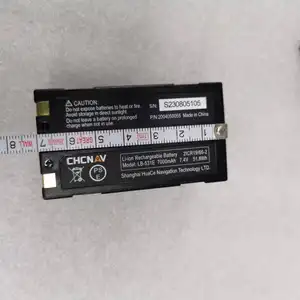


LB-531E huace rtk i80/60/X10/9/T8/T7/M6 máy chủ GPS Pin lithium ion XB-2 Samsung Pin tế bào
19,00 US$ - 29,00 US$
Đơn hàng tối thiểu: 10 Cái
Vận chuyển mỗi chiếc: 6,30 US$





CNNTNY Pin LiFePo4 48V 50AH 3.2V Lifepo4 LFP Lithium Ion 50 Ah Pin Hình Lăng Trụ LiFePo4 Pin Điện Năng Lượng Mặt Trời Cho Xe Hơi Tại Nhà Marine UPS
480,00 US$ - 499,00 US$
Đơn hàng tối thiểu: 2 Cái






3.0V Siêu Nhỏ Lipo Phẳng Li Ion Li-Polymer Di Động GEB 661515 85MAH Có Thể Sạc Lại Lithium Ion 3.7V Li-ion Polymer Pin 3.6V
0,80 US$ - 1,00 US$
Đơn hàng tối thiểu: 1000 Bộ






Li-polymer pin nhỏ Li-ion di động 3.7V 11.1V 14.8V 18.5V 24V 36V 48V 60V 72V Polymer Lithium Ion 7.4 V 7.4 Volt 750mAh pin
2,20 US$ - 2,50 US$
Đơn hàng tối thiểu: 4 Cái
Vận chuyển mỗi chiếc: 6,25 US$
Các tìm kiếm liên quan:
lithium ion li iocác nhà sản xuất tế bào lithium ionpin lithium ionion lithium tế bào lipin lithium ion cho xe đạpmua tế bào ion lithiumtế bào ion lithiumtrọng lượng ion lithiummah li ionbảo vệ ion lithiumcông suất cao li-ionion lithiumphòng thí nghiệm lithiumbộ điều khiển ion lithiumkích thước tế bào ion li







Sam INR18650-29E 3.6V 3.7V 18650 2900mAh 18650 Lithium Ion 29e một lớp Pin tế bào cho xe điện
2,98 US$ - 3,98 US$
Đơn hàng tối thiểu: 100 Cái






Tùy chỉnh Lithium Ion 18650 hình trụ di động 3.2V 1500mAh pin có thể sạc lại
1,20 US$ - 1,30 US$
Đơn hàng tối thiểu: 5 Cái






9V Lipo polymer lithium ion 2 Volt 6V 6000mAh AA USB có thể sạc lại pin di động 9000mAh 1.5
1,51 US$ - 3,15 US$
Đơn hàng tối thiểu: 2 Cái






Pin Lithium Ion 12V 200Ah 300Ah 400Ah Chu Kỳ Sâu Có Thể Sạc Lại Pin Lithium Prismatic Lifepo4 Pin 3.2V 400ah
459,00 US$
Đơn hàng tối thiểu: 2 Cái
Vận chuyển mỗi chiếc: 74,50 US$






Pin Xe Đạp OEM 18650 20S 8P 18650 Tế Bào 72V 20Ah Pin Lithium Ion
9,90 US$ - 689,00 US$
Đơn hàng tối thiểu: 1 Cái






Pin Ắc Quy Xe Điện Hình Trụ 3.2 Lithium Ion Sạc Lại Được 6000 V 32700 Mah Tự Xả Thấp
1,85 US$ - 2,35 US$
Đơn hàng tối thiểu: 20 Bộ






32700 6Ah 3.2V 19.2wh tăng cường công suất Lithium ion thay thế pin lithium LiFePO4 hình trụ
1,92 US$ - 2,10 US$
Đơn hàng tối thiểu: 2 Cái
Vận chuyển mỗi chiếc: 37,50 US$






Ubppower 3.2V 280ah LiFePO4 24V lăng trụ Pin RV Lithium Ion 12V 280ah gói tế bào LiFePO4 Pin
96,00 US$ - 100,00 US$
Đơn hàng tối thiểu: 4 Cái
Vận chuyển mỗi chiếc: 76,00 US$





Jingsun 100Ah 200AH 300ah 400ah Lithium Ion gói pin 12V pin 12V 150AH pin Lithium ion
280,00 US$ - 300,00 US$
Đơn hàng tối thiểu: 10 Cái






GF Prismatic Lithium ion siêu chống sốc 3.2V LiFePO4 Pin 86ah-augfpr86l2 có thể sạc lại pin ổn định LFP
36,00 US$ - 38,00 US$
Đơn hàng tối thiểu: 2 Cái






Nhà Máy Giá 3.7V lithium có thể sạc lại Ion pin Li ion 2500mAh 3000mAh 18650 Li-ion pin di động
0,88 US$ - 1,20 US$
Đơn hàng tối thiểu: 100 Cái






18650 pin có thể sạc lại gói 12V 24V 36V 48V pin lithium ion 18650 3000mAh tế bào
1,48 US$ - 1,58 US$
Đơn hàng tối thiểu: 100 Cái






3.7V 94Ah Nmc Tế Bào Quảng Châu Ev Có Thể Sạc Lại Cho E-bike Lithium Ion 3.7V 94ah Pin Lăng Trụ
Sẵn sàng vận chuyển
34,90 US$ - 37,70 US$
Đơn hàng tối thiểu: 4 Cái
Vận chuyển mỗi chiếc: 42,50 US$






Suiprse giá Lithium Ion 100Ah 136ah 152ah pin di động LiFePO4 pin 24V Pin gói
49,30 US$ - 761,00 US$
Đơn hàng tối thiểu: 2 Gói






Vòng Tròn Sâu 12V/24V/36V 100ah/200ah/300ah Lithium Ion/Li-ion Pin Cho Marine/RV
158,00 US$ - 178,00 US$
Đơn hàng tối thiểu: 2 Cái






Chu Kỳ Dài Cuộc Sống 3.2V 25ah 50ah Lifepo4 Lăng Trụ Pin Lithium Ion Lifepo4/NMC Pouch Di Động Cho Xe Điện Xe Máy
25,00 US$ - 32,00 US$
Đơn hàng tối thiểu: 1 Cái


Pin Lithium Ion Lifepo4 Dung Lượng Lớn Có Thể Sạc Lại Prismatic Nhà Sản Xuất Pin Lithium 3.2V Tế Bào 200ah
130,00 US$ - 150,00 US$
Đơn hàng tối thiểu: 1 Cái






Vòng Đời Sâu Hơn 5000 Lần Pin Sạc Lithium 3.2V 400ah Thunder Sky Winston Có Thể Sạc Lại
400,00 US$ - 480,00 US$
Đơn hàng tối thiểu: 4 Cái






Pin Lithium Ion Lifepo4 Headway 40152S 3.2V 17AH Cho Đèn Đường Năng Lượng Mặt Trời Pin Lithium Sắt Phosphate
Sẵn sàng vận chuyển
12,00 US$
Đơn hàng tối thiểu: 2 Cái
Vận chuyển mỗi chiếc: 23,73 US$




Pin Sạc 3.2V Lithium Ion Pin Prismatic Cell 3.2V 70Ah 75Ah LiFePO4 Pin
60,00 US$ - 80,00 US$
Đơn hàng tối thiểu: 4 Cái






Hot Bán Sạc BIS Chấp Thuận Lithium Ion 32650/32700 3.2V 6000MAh Lifepo4 Pin Di Động
Sẵn sàng vận chuyển
1,40 US$ - 2,00 US$
Đơn hàng tối thiểu: 100 Cái
Vận chuyển mỗi chiếc: 3,49 US$






AA 1.5 Điện Áp Pin AAA Lithium Ion Sạc USB Kích Thước Pin AA 2600mWh Lr6 1.5 V Cho Smartoools Không Lr6 Alkaline Cell
Sẵn sàng vận chuyển
2,50 US$ - 3,00 US$
Đơn hàng tối thiểu: 2 Gói
Vận chuyển mỗi chiếc: 13,00 US$






3.2V LiFePO4 310ah 320ah 24V Lớp Một lăng trụ pin Lithium ion tế bào 320ah 400aah LiFePO4 pin di động màu xanh đồ chơi pin
19,00 US$ - 69,00 US$
Đơn hàng tối thiểu: 2 Cái
Vận chuyển mỗi chiếc: 43,88 US$






Lithium Ion năng lượng mặt trời lưu trữ pin LiFePO4 3.2V pin di động
Sẵn sàng vận chuyển
55,80 US$ - 60,00 US$
Đơn hàng tối thiểu: 20 Cái
Vận chuyển mỗi chiếc: 7,64 US$






400Ah Prismatic Pouch LiFePO4 Cell 3.2V 400Ah Pin Sạc Lithium Ion
Sẵn sàng vận chuyển
320,00 US$ - 335,00 US$
Đơn hàng tối thiểu: 10 Cái
Vận chuyển mỗi chiếc: 103,29 US$






Pin Năng Lượng Mặt Trời Lifepo4 200ah 230ah 280ah Chính Hãng Pin Lithium Ion Lifepo4 Lfp
Sẵn sàng vận chuyển
30,00 US$ - 65,00 US$
Đơn hàng tối thiểu: 4 Cái
Vận chuyển mỗi chiếc: 25,00 US$






NCM 3.7V 29ah li ion polymer chu kỳ sâu Pin Lithium Ion pin SK đổi mới Túi tế bào cho năng lượng lưu trữ pin
12,20 US$ - 15,30 US$
Đơn hàng tối thiểu: 500 Cái
Các danh mục hàng đầu
Giới thiệu về 2 tế bào lithium ion
Công nghệ đang thay đổi cách mọi người sống hàng ngày. Như vậy, đáng tin cậy. 2 tế bào lithium ion trên Alibaba.com mang lại độ bền tốt hơn cho bất kỳ thiết bị nào cần sản lượng điện tốt hơn. Các mẫu khác nhau có các thông số kỹ thuật khác nhau để phù hợp với khuyến nghị của nhà cung cấp. Bền chặt. 2 tế bào lithium ion phải nhanh chóng được tìm thấy và có thể dễ dàng thay thế. Với nhiều loại vật liệu sản xuất, bạn có thể lựa chọn tốt hơn khi mua để sử dụng.
Do tiến bộ công nghệ, nhiều thiết bị cần được cung cấp điện liên tục. Đáng tin cậy. 2 tế bào lithium ion sẽ tồn tại lâu hơn các thiết bị chủ để có dịch vụ tốt hơn. Tương tự, các sản phẩm hỗ trợ này tương thích với các thành phần liti và axit chì. Do đó, khả năng tương thích giữa các thiết bị và các tiện ích hỗ trợ là rất phù hợp.
Cho dù đó là thiết bị gia đình văn phòng phẩm hay pin sạc dự phòng di động, có thể sạc lại. Các phần 2 tế bào lithium ion trên Alibaba.com giúp đảm bảo rằng chúng cung cấp cho người dùng dịch vụ tối ưu. Các sản phẩm này có thể chịu được nhiệt độ cao và ăn mòn. Tuổi thọ dài mang lại dịch vụ tốt hơn trước khi chúng cần được thay thế. Một lần nữa, các cơ sở lưu trữ phải còn nguyên vẹn để giảm va đập mạnh và hư hỏng. Chúng cũng đi kèm với cáp kết nối để có dịch vụ tốt hơn.
Đối với nhu cầu điện quy mô lớn như xe ba bánh và nhạc cụ, kỹ thuật số. 2 tế bào lithium ion cung cấp một bước đệm tài chính. Alibaba.com cung cấp một nền tảng để đảm bảo độ tin cậy khi mua hàng. Nhiều người bán trên toàn cầu phân phối sản phẩm trong khung thời gian hợp lý để tạo sự thoải mái cho khách hàng. Cuộn qua các danh mục để biết các thiết bị tương thích nhất và các giao dịch tài chính.
Do tiến bộ công nghệ, nhiều thiết bị cần được cung cấp điện liên tục. Đáng tin cậy. 2 tế bào lithium ion sẽ tồn tại lâu hơn các thiết bị chủ để có dịch vụ tốt hơn. Tương tự, các sản phẩm hỗ trợ này tương thích với các thành phần liti và axit chì. Do đó, khả năng tương thích giữa các thiết bị và các tiện ích hỗ trợ là rất phù hợp.
Cho dù đó là thiết bị gia đình văn phòng phẩm hay pin sạc dự phòng di động, có thể sạc lại. Các phần 2 tế bào lithium ion trên Alibaba.com giúp đảm bảo rằng chúng cung cấp cho người dùng dịch vụ tối ưu. Các sản phẩm này có thể chịu được nhiệt độ cao và ăn mòn. Tuổi thọ dài mang lại dịch vụ tốt hơn trước khi chúng cần được thay thế. Một lần nữa, các cơ sở lưu trữ phải còn nguyên vẹn để giảm va đập mạnh và hư hỏng. Chúng cũng đi kèm với cáp kết nối để có dịch vụ tốt hơn.
Đối với nhu cầu điện quy mô lớn như xe ba bánh và nhạc cụ, kỹ thuật số. 2 tế bào lithium ion cung cấp một bước đệm tài chính. Alibaba.com cung cấp một nền tảng để đảm bảo độ tin cậy khi mua hàng. Nhiều người bán trên toàn cầu phân phối sản phẩm trong khung thời gian hợp lý để tạo sự thoải mái cho khách hàng. Cuộn qua các danh mục để biết các thiết bị tương thích nhất và các giao dịch tài chính.
